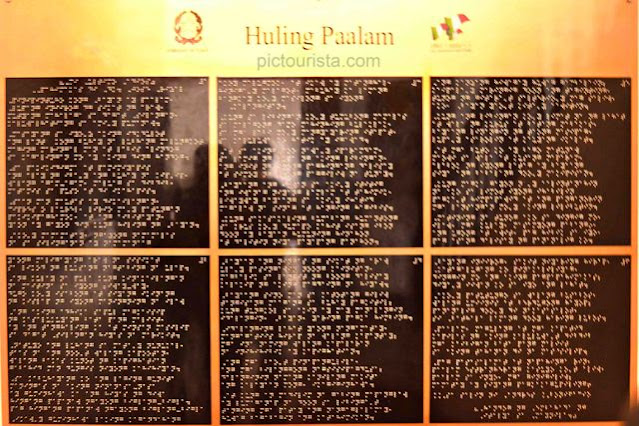Nestled within the heart of Manila, Philippines, Fort Santiago stands as a symbol of resilience and a testament to the city's storied past. With its towering stone walls, lush gardens, and rich historical significance, Fort Santiago is more than just a historic site; it's a living monument that invites visitors to explore the layers of history, heroism, and heritage. In this article, we'll embark on a journey to discover the captivating history and cultural significance of Fort Santiago, a must-visit destination for locals and tourists alike.
A Glimpse into History
A Glimpse into History
Built by the Spanish conquistador Miguel López de Legazpi in 1571, Fort Santiago was initially constructed as a wooden fort to defend against pirates and foreign invaders. Over the centuries, it underwent several transformations, including being rebuilt using stone in the late 16th century. However, it was during the 17th and 18th centuries that the fort took on its present form, featuring thick stone walls and a robust design.
Key Historical Events
Fort Santiago has witnessed numerous significant events in Philippine history. Some of the most noteworthy include:
1. Spanish Colonial Era: Fort Santiago served as the primary defense fortress during the Spanish colonial period. It was used for various purposes, including as a stronghold against Dutch, Chinese, and British invaders.
2. Dr. José Rizal: The most poignant chapter in the fort's history is its association with the Philippine national hero, Dr. José Rizal. He was imprisoned within the fort's dungeons prior to his execution in 1896. Today, the Rizal Shrine, located within Fort Santiago, commemorates his life and the sacrifices he made for the country's independence.
3. Japanese Occupation: During World War II, Fort Santiago became a Japanese internment camp, where prisoners of war and other detainees were held. The fort's dungeons bear witness to the hardships endured by those who were imprisoned there.
4. Liberation and Restoration: After the war, Fort Santiago underwent significant restoration, and it was officially declared a historical monument in 1950. It now stands as a museum and park dedicated to preserving and showcasing Philippine history and culture.
Exploring Fort Santiago
A visit to Fort Santiago offers a multi-faceted experience, where visitors can engage with history, art, and the natural beauty of the site. Some of the highlights of a visit include:
1. Rizal Shrine: The shrine dedicated to Dr. José Rizal houses a museum featuring his personal belongings, documents, and memorabilia. It's a poignant reminder of his pivotal role in the Philippines' fight for independence.
Rizal Shrine, this museum dedicated to the lifework of José Rizal.
2. Dungeons and Bastions: Explore the dungeons, cells, and bastions that were once used for military defense and as prison cells. The architecture and historical context provide insight into the fort's fascinating past.
The dungeon, of Jose Rizal was imprisoned here before his execution in 1886, and the massacres brought upon by the Japanese in the 1940s.
3. Historical Displays: Fort Santiago showcases various historical artifacts, documents, and interactive exhibits that help visitors gain a deeper understanding of the Philippines' history and its struggles for freedom.
3. Historical Displays: Fort Santiago showcases various historical artifacts, documents, and interactive exhibits that help visitors gain a deeper understanding of the Philippines' history and its struggles for freedom.
4. Beautiful Gardens: Amidst the historical structures, Fort Santiago boasts lush gardens and courtyards where visitors can relax and enjoy a serene atmosphere, offering a respite from the bustling city.
My Last Farewell ( Mi Ultimo Adios), written by Jose Rizal on the eve of his execution.
Jose Rizal's last step before his execution.
Life-size statue of our national hero Dr. Jose P. Rizal inside a prison cell. This is the actual site where he was detained.
Fort
Santiago is a living testament to the rich and complex history of the
Philippines. Its evocative architecture, historical significance, and
cultural importance make it a vital heritage site in the heart of
Manila. As you explore the fort's halls and gardens, you'll not only
encounter a vibrant history but also gain a deep appreciation for the
resilience, courage, and determination of the Filipino people. A visit
to Fort Santiago is an educational and emotionally moving experience
that connects visitors to the spirit of the Philippines and its quest
for independence. It's a place where the past continues to breathe and
inspire the future.
Fort
Santiago is one of the most important historical sites in Manila . It
was named after the patron saint of Spain St. James the Great . The fort
served as a defense fortress of the Spaniards against the enemy of the
state .
Contact: +63-2-525-6322
Open Hours: 8am-6pm daily



















0 $type={blogger}:
Post a Comment